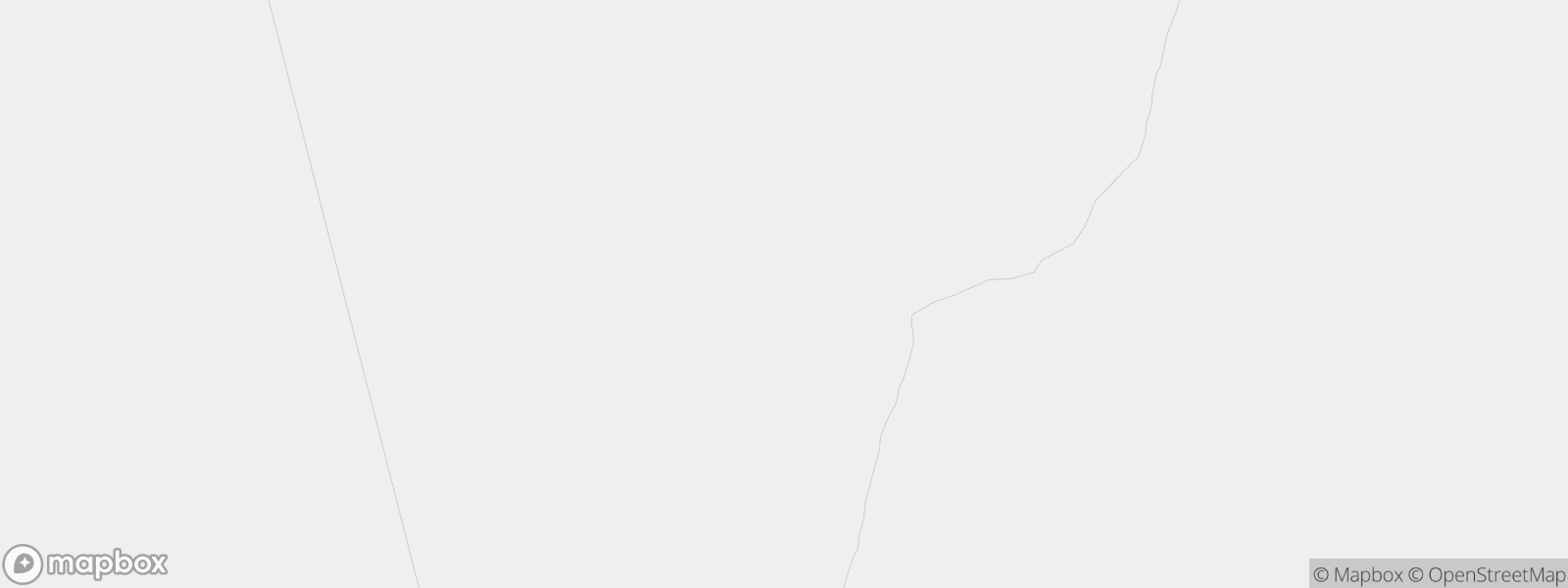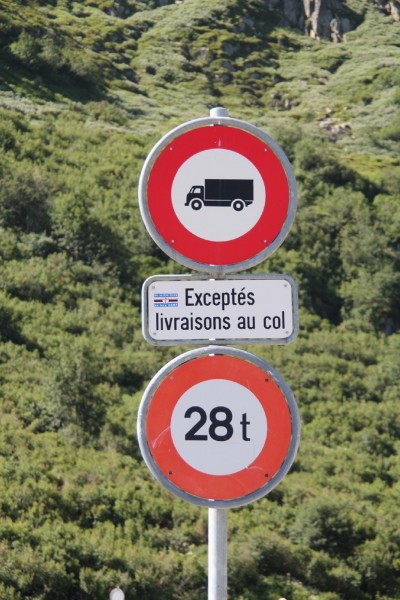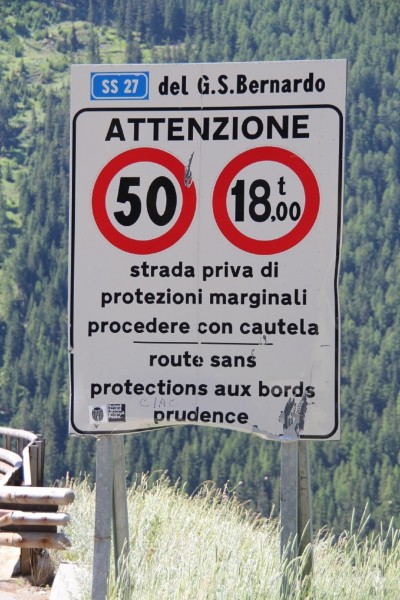Closed for the winter
Bourg-St-Pierre - national border
Important note: On 20 October 2025 from 0800 hours, the Great St Bernard Pass will be closed for the winter.
Unchanged valid since:: 20.10.2025, 05:31
History
(Col du Gd-Saint-Bernard; Colle del Gran San Bernardo)
Artifacts found along the northern approach to the Gt. St. Bernhard Pass prove that the pass was used in the early iron ages, making it one of the oldest alpine traverses. The pass was used as a connecting axis between Gallien and the Rhine River as Julius Caesar mentions in his «De bello Gallico». The pass was widened for wagons under the rule of Emperor Claudius (54 a.d). Compared to the other passes that were also used by the Romans there were no difficult gorges and cliffs that had to be passes.
Traders, dignitaries & crusaders all used the pass during the middle ages and it was at this time that it became increasingly used by pilgrims travelling from France to Rome, as substantiated by a journel by the Archbishop Sigerich 1st of Canterbury (d. 994 a.d.).
During Roman times, a tempel revering Poeninus stood at the top of the pass and Bernhard von Menthon , Archdiakon from Aosta had a hospiz built nearby in 1050 a.d. to protect all travellers. Von Menthon was made holy and the Mt. St. Bernard Pass was named after him in the 13th century. The Earls and Dukes of Savoyen generously supported the hospiz and it was eventually taken over by the Augustinian canons. The Augustinians were known and appreciated for their hospitality over hundreds of years. In more recent times the St. Bernhard became famous for breeding St. Bernhard dogs.
The international transit trade began in the 13th century and lead to the development and economical prosperity of the villages and towns along the route. Sembrancher, Bourg-Saint-Pierre, La Cantine de Proz were known as points of goods transfer and the wares were taken over the pass on all sorts of vehicles by the locals. Road taxes and duty were collected at certain points along the way until 1808. Construction of the Mont-Cenis pass in 1803 meant direct competition for traders over the Gr. St. Bernhard, but the Gr. St. Bernhard was politically more important and brought prosperity to the canton of Valais over many hundreds of years. The pass was also of strategic military importance from the 17th century and Napoleon crossed the pass in 1800 a.d. with over 30,000 soldiers to begin battle in the Lombardy. In 1906, the border between Switzerland and Italy was finally regulated. The canon Laurent Joseph Murith («Guide du botaniste qui voyage dans le Valais», 1810) recognised the importance of the pass for explorers and researchers and financed the meteorological and geological findings of Horace Bénédict de Saussure.
The district of Valais began constructing the pass road in 1839 and the Swiss side was completed in 1893 the Italian side not until 1905. The idea of a tunnel under the Col de Menouve, which could be open summer and winter, was already touted in the 19th century and the Valais cantonal government granted permission to build such a tunnel in 1938. Violent opposition from Swiss federal authorities, Simplon supporters and the SBB delayed construction begin until 1958. Europes first underground alpine road tunnel was opened on 13 April 1964. Passenger and goods transport increased continually. The opening of the Gotthard Tunnel reduced the importance of the Gr. St. Bernhard. The best known «face» of the Gr. St. Bernhard still remains that of «Barry» - the St. Bernhard dog with the schnapps bottle tied around his neck.
Closed time during winter: Opening / Closing Grosser Sankt Bernhard
| Pass/Year | 2025 | 2024 | 2023 | 2022 | 2021 | 2020 | 2019 | 2018 | 2017 | 2016 | 2015 | 2014 | 2013 | 2012 | 2011 | 2010 | 2009 | 2008 | 2007 | 2006 | 2005 | 2004 | 2003 | 2002 | 2001 | 2000 | 1999 | 1998 | 1997 | 1996 | 1995 | 1994 | 1993 | 1992 |
|---|---|---|---|---|---|---|---|---|---|---|---|---|---|---|---|---|---|---|---|---|---|---|---|---|---|---|---|---|---|---|---|---|---|---|
| Grosser Sankt Bernhard | 13.06. - 14.10. | 01.06. - 16.10. | 31.05. - 17.10. | 04.06. - 18.10. | 29.05. - 12.10. | 03.06. - 14.10. | 05.06. - 15.10. | 30.05. - 04.11. | 03.06. - 17.10. | 05.06. - 19.10. |
Technical Data
Location

Signalisation

Bourg St Bernard - Landesgrenze
- Höchstgewicht 28 t
- Verbot für schwere Motorfahrzeuge. Ausgenommen sind Lieferungen zum Hospiz

Passes
- Closed for the winterUnchanged valid since:: 25.12.2025, 14:29-14°C12%30.4 KmWinter closure (Oct/May)
Preda - La Punt Chamues-ch
The cantonal road (mountain pass) between Berguen and Preda is a toboggan run and remains closed to motor vehicles and horse-drawn carriages during the winter from calendar week 49 until the end of the tobogganing season (usually the end of calendar week 11).
Important note: Season opening at Bergün Tobogganing World – Friday, 26 December 2025
Winter closure from 8 December 2025 at 9 a.m.
- Open, no restrictionsUnchanged valid since:: 25.12.2025, 15:20-14°C10%37 Kmopen all year round
Pontresina - San Carlo
Winter tyres are obligatory for the whole winter period. Depending on the weather conditions, snow chains may be obligatory over a short period, or the pass may close.
- Open, no restrictionsUnchanged valid since:: 26.11.2025, 10:06-3°C13%13 Kmopen all year round
Lungern - Brienzwiler
Winter tyres are obligatory for the whole winter period. Depending on the weather conditions, snow chains may be obligatory over a short period, or the pass may close completely.
- Open, snow covered. Risk of slippery iceUnchanged valid since:: 10.12.2025, 14:09-14°C14.6%27 KmWinter closure (Jan /May)
Tschuggen - Susch
Between Tschuggen and Susch, expected to reopen today, December 10, 2025, from 1:00 p.m.
Davos - Susch covered in snow
Next assessment: December 10, 2025, 1:00 p.m.
Vehicle transport Flüela/Vereina Tel. 0041 81 288 37 37
- Closed for the winterUnchanged valid since:: 17.11.2025, 05:26-5°C11%29 KmWinter closure (Oct/May)
- Closed for the winterUnchanged valid since:: 29.11.2025, 02:08-13°C12.7%21.3 KmWinter closure (Oct/May)
La Motta - Country border
Important note: Between La Motta and Forcola di Livigno, on the Swiss/Italian border, the winter closure will apply from 28 November 2025 at midnight.
Traffic information for the bordering South Tyrol/Passes: www.suedtirol.com/verkehr/berg-paesse
- Closed for the winterUnchanged valid since:: 17.11.2025, 15:10-7°C11%32 KmWinter closure from Langis: November - April
Sarnen - Entlebuch
On the Obwalden side, the road remains open during the winter as far as Langis.
- Closed for the winterUnchanged valid since:: 17.11.2025, 11:31-6°C12%39 KmWinter closure from Mörlialp (Oct / May)
Giswil - Sörenberg, "Panoramastrasse"
Today, 17 November 2025, the Panoramastrasse will be closed for the winter from 5 p.m.
Important note: During the winter, the road on the Obwalden side will remain open as far as Mörlialp.
Important note: Restrictions for coaches and trucks see section Signalization.
- Closed for the winterUnchanged valid since:: 07.11.2025, 09:15-3°C9%24 KmWinter closure (Oct/May)
Hospental - Airolo
The Gotthard Pass between Hospental and Airolo can no longer be opened for safety reasons. The winter closure will apply from 8 a.m. on Friday, 7 November 2025.
Tremola (Strada turistica) Passhöhe - Airolo: 3.5 t. winter closure
- Closed for the winterUnchanged valid since:: 15.12.2025, 09:51-10°C11%24 KmWinter closure (Oct/May)
Guttannen - Gletsch
On the Bernese side, open from 14 November 2025, 2 p.m. to Guttannen.
Only ski tourers are permitted to ski the section between Guttannen and KW Handeck. Tickets for the LSB Handegg – Gerstenegg can be purchased online until 4 p.m. the evening before at www.grimselwelt.ch. For the latest avalanche and road reports, visit https://www.grimselstrom.ch/media/info/Lawinenbulletin.pdf.
- Closed for the winterUnchanged valid since:: 20.10.2025, 05:31-7°C11%44 KmWinter closure (Oct/May)
Bourg-St-Pierre - national border
Important note: On 20 October 2025 from 0800 hours, the Great St Bernard Pass will be closed for the winter.
- Closed for the winterUnchanged valid since:: 20.10.2025, 05:36-9°C15%28 KmWinter closure (Oct/May)
Meiringen - Grindelwald
The winter closure is in effect from today, 20 October 2025. The pass is expected to open in 2026: Ascension Day, 14 May 2026, with the start of bus service.
There is a general driving ban on motorized traffic between Schwarzwaldalp and Grindelwald (Hotel Wetterhorn).
- Open, no restrictionsUnchanged valid since:: 30.11.2025, 08:35-4°C10.1%17 Kmopen all year round
Schwyz - Oberiberg
- Open, no restrictionsUnchanged valid since:: 25.12.2025, 18:23-13°C12%16 Kmopen all year round
Bivio - Silvaplana
Winter equipment is mandatory during the winter months. Snow chains are compulsory for a limited period of time depending on the circumstances, as is any closure of the pass.
- Closed for the winterUnchanged valid since:: 31.10.2025, 03:54-2°C9%35 KmWinter closure (Oct/May)
Urigen - Urnerboden
From 31 October 2025, the Klausen Pass will be closed for the winter.
Info for car travel summer 2025:
2.30 m wide, two-axle and 18-ton vehicles do not require a permit, also applies at weekends.
From the opening of the pass in 2025 until its closure in 2025, single-decker, 2.55 m wide, two-axle and max. 18-ton touring cars (trailer ban) may travel on the Klausen Pass from Monday to Friday with a special permit. Monday, Wednesday and Friday from Unterschächen to Linthal. Tuesday and Thursday from Linthal to Unterschächen. Timing must be coordinated with Postbus routes.
Permits can be obtained from the Road Traffic Office of the Canton of Uri or the Canton of Glarus.Permits for Linthal – Unterschächen can be obtained at:
Strassenverkehrs- u. Schifffahrtsamt des Kanton Glarus,
Mühleareal17
8762 Schwanden
Tel 055 646 54 00
E-Mail: stva@gl.ch
Permits for Unterschächen - Linthal can be obtained at:
Amt für Strassen- und Schiffsverkehr
Gotthardstrasse 77a
6460 Altdorf
Tel 041 875 28 06
E-Mail: sonderbewilligungen@ur.ch
https://www.ur.ch/publikationen/6500 - Open, snow covered. Risk of slippery iceUnchanged valid since:: 25.12.2025, 15:12-2°C9%39 Kmopen all year round
Fuorns - Campra
Snow covered between Fuorns and Campra
Winter tyres are obligater for the whole winter period. Depending on the weather conditions, snow chains may be obligatory over a short period, or the pass imay close completely. See also www.lucomagno.ch
- Open, no restrictionsUnchanged valid since:: 25.12.2025, 14:52-11°C9%30 Kmopen all year round
Silvaplana - Casaccia
Winter tyres are obligatory for the whole winter period. Depending on the weather conditions, snow chains may be obligatory over a short period, or the pass may close Complete,
- Closed for the winterUnchanged valid since:: 27.10.2025, 10:36-6°C13%38 KmWinter closure (Oct/May)
All' Acqua - Ulrich
On the Ticino side open during the winter to All'Acqua.
- Closed for the winterUnchanged valid since:: 25.12.2025, 15:15-3°C6%23 KmWinter closure (Oct/May)
Tschamut - Andermatt
- Open, no restrictionsUnchanged valid since:: 26.12.2025, 05:04-5°C14.3%35 Kmopen all year round
Zernez - Tschierv
Winter tyres are obligatory for the whole winter period. Depending on the weather conditions, snow chains may be obligatory over a short period, or the pass may close completely.
Traffic information for the bordering South Tyrol/Passes: www.suedtirol.com/verkehr/berg-paesse
- Closed for the winterUnchanged valid since:: 03.11.2025, 12:005°C18%50 KmWinter closure (Oct/May)
Muotathal - Glarus
The Pragel Pass road between the Pragel-Bödmeren Alpine cheese dairy on the Schwyz side and Gampel on the Glarus side is now closed for the winter.
The following traffic restrictions apply to the entire Pragelpass road:
1. Motor vehicles and motorcycles are prohibited on Saturdays and Sundays, 5.5 km after the
pass summit (cantonal border SZ/GL to Richisau, approx. 2 km)
2. On public holidays that do not fall on a Saturday or Sunday, the Pragelpass is normally passable
(except winter closure)
3. Maximum weight 3.5 tons (SSV signal 2.16) except for agricultural, alpine and forestry
traffic, traffic for the construction, operation and maintenance of public and private works (incl.
electrical infrastructures), traffic for milk processing plants and military traffic;
4. Driving ban for trailers (SSV signal 2.09) except for agricultural, alpine and forestry
traffic, traffic for the construction, operation and maintenance of public and private works (incl.
electrical infrastructures), traffic for milk processing plants and military traffic;
5. Maximum weight of agricultural, alpine and forestry traffic, traffic for the construction, operation and maintenance
of public and private works (incl. electrical infrastructure) and traffic for
milk processing plants incl. trailers 32 tons (SSV signal 2.16);
6. Maximum weight of military traffic incl. trailers 12 tons.
For special permits relating to weight restrictions, please use the application form on the
online portal. https://www.bezirk-schwyz.ch/aktuelles/pragelpass/ - Closed for the winterUnchanged valid since:: 03.11.2025, 15:57-9°C9.7%17 KmWinter closure (Oct/May)
Hinterrhein - San Bernardino (Pass road, italien road).
- Open, no restrictionsUnchanged valid since:: 26.12.2025, 08:57-6°C9%67 Kmopen all year round
Brig - Gondo
Winter tyres are obligatory for the whole winter period. Depending on ithe weather conditions, snow chains may be obligatory over a short period, or the pass may close completely.
- Closed for the winterUnchanged valid since:: 01.12.2025, 11:49-11°C13%39 KmWinter closure (Oct/May)
Splügen - Country border
Closed until further notice for safety reasons.
The Splügen Pass is expected to close for the winter season from 7:00 a.m. on 1 December 2025.
- Closed for the winterUnchanged valid since:: 27.10.2025, 12:53-11°C9%46 KmWinter closure (Oct/May)
Wassen - Innertkirchen
On the Bernese side, it remains open until Obermaad.
- Closed for the winterUnchanged valid since:: 10.11.2025, 14:07-11°C12%33 KmWinter closure (Oct/May)
Sta. Maria i. M. - country border
Winter closure from Monday, 10 November 2025, 2 p.m.
Winter closure of the Stelvio Pass from Friday, 7 November 2025, 9:00 a.m.
Traffic information for neighbouring South Tirol pass: www.suedtirol.com/verkehr/berg-paesse
